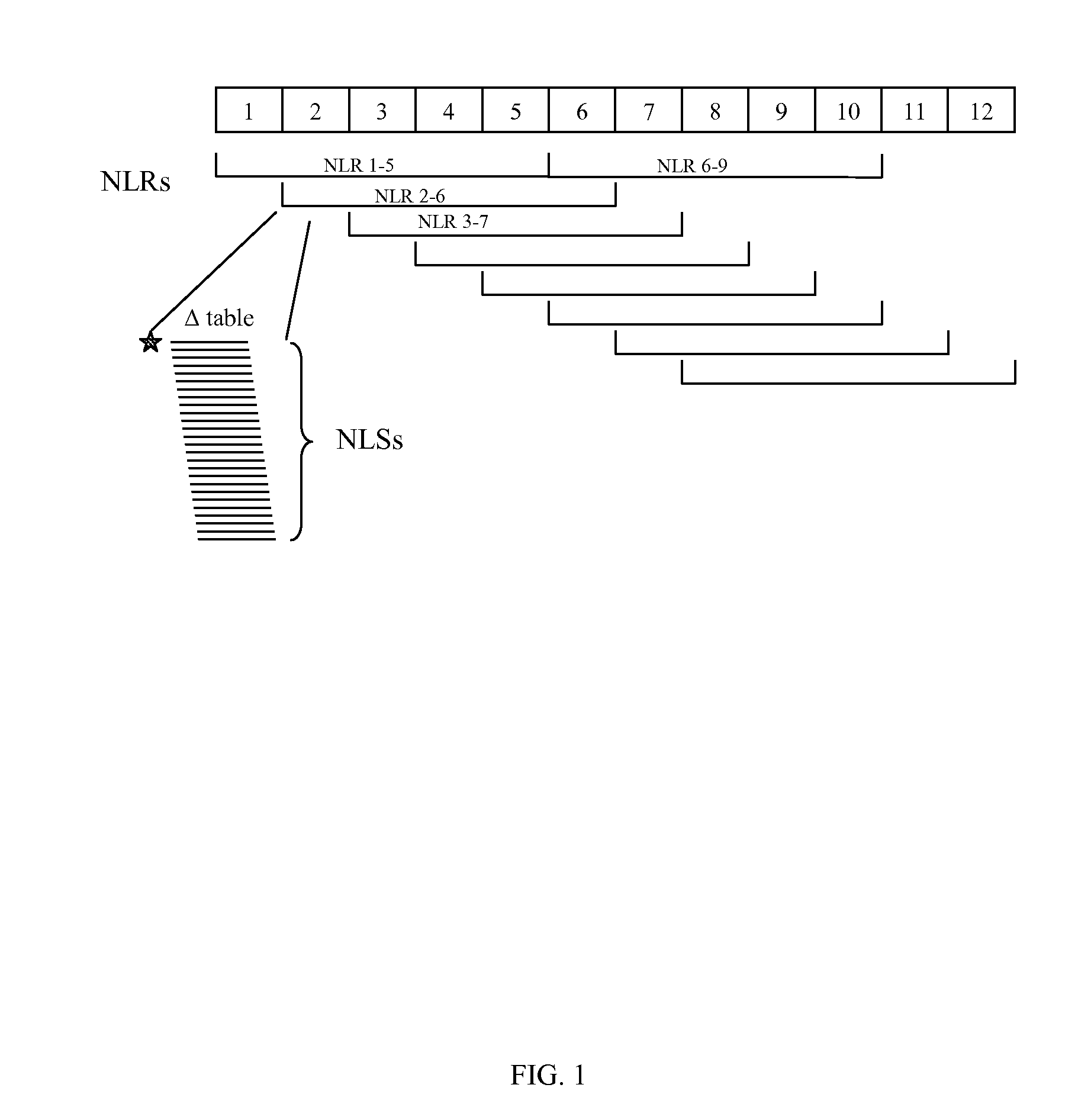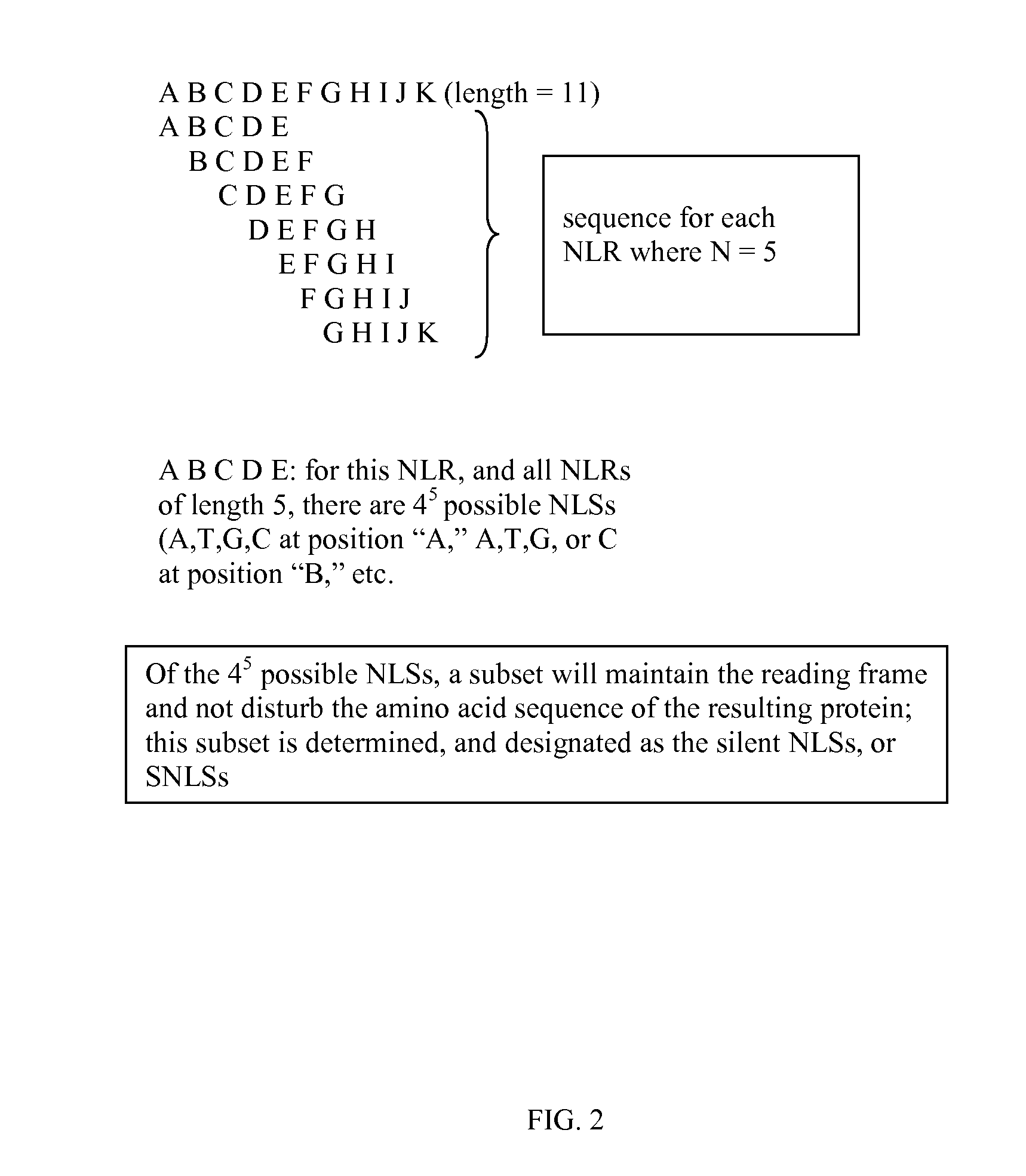Computational methods for synthetic gene design
a synthetic gene and gene technology, applied in the field of synthetic gene design, can solve the problems of difficult expression of foreign genes in heterologous hosts such as plant cells, inability to detect the expression product, and inability to express non-functional mrna transcripts in transgenic host cells
- Summary
- Abstract
- Description
- Claims
- Application Information
AI Technical Summary
Benefits of technology
Problems solved by technology
Method used
Image
Examples
example 1
Optimization of a Bacterial Delta Endotoxin Gene for Expression in Zea mays Using an Order 5 Statistical Model
[0107]Step 1: Identification and collection of Z. mays cDNA sequences (Module A). Sequences of coding regions known in the art to be expressed in Zea mays were collected from public resources (e.g. GENBANK®). These sequences consisted of mRNAs, cDNAs, or genomic fragments representing coding sequences. As needed, the sequences were edited to remove non-coding regions (by preferentially identifying open reading frame (ORF) regions within the sequence population).[0108]Step 2: Generation of an NLS stats Table for the Zea mays cDNA sequences using an N of 5. Sequences from Z. mays were analyzed using a 5-base sliding sequence window as described in module B. A table consisting of all possible 5-base sequences was generated, and counts recorded for each 5-base sequence observed in the Z. mays sequence set from Step 1. Observed counts were divided by the total number of observed ...
example 2
[0113]The following algorithms provide an example of a functional set of algorithms for carrying out methods of the invention.
example 3
Generation of an Optimized Gene Sequence Using the Nucleotide Sequence
[0114]The following example shows an abbreviated log file generated by use of the algorithms of Example 2 to create an optimized gene sequence. Many log entries have been deleted and replaced with “DATA NOT SHOWN,” which simply indicates that similar steps were performed but not listed in this example. Sequences shown in this example are listed in Table 1.
Optimizing sequence axmi004_original . . .
[0115]Beginning round 1 of optimization.[0116]Updating at position 1222, oligo is TGAGA, raw score is 0.032, delta score is 4.664.[0117]Updating at position 403, oligo is TGAGA, raw score is 0.032, delta score is 4.134.
(DATA NOT SHOWN)[0118]Updating at position 1138, oligo is ACTTC, raw score is 0.127, delta score is 0.134.
[0119]Round 1 completed. Sequence score is 70.241
[0120](DATA NOT SHOWN)
[0121]Beginning round 6 of optimization.[0122]Updating at position 1561, oligo is TGAGG, raw score is 0.091, delta score is 0.058.
[...
PUM
| Property | Measurement | Unit |
|---|---|---|
| length | aaaaa | aaaaa |
| frequency | aaaaa | aaaaa |
| N-length | aaaaa | aaaaa |
Abstract
Description
Claims
Application Information
 Login to View More
Login to View More - R&D
- Intellectual Property
- Life Sciences
- Materials
- Tech Scout
- Unparalleled Data Quality
- Higher Quality Content
- 60% Fewer Hallucinations
Browse by: Latest US Patents, China's latest patents, Technical Efficacy Thesaurus, Application Domain, Technology Topic, Popular Technical Reports.
© 2025 PatSnap. All rights reserved.Legal|Privacy policy|Modern Slavery Act Transparency Statement|Sitemap|About US| Contact US: help@patsnap.com


